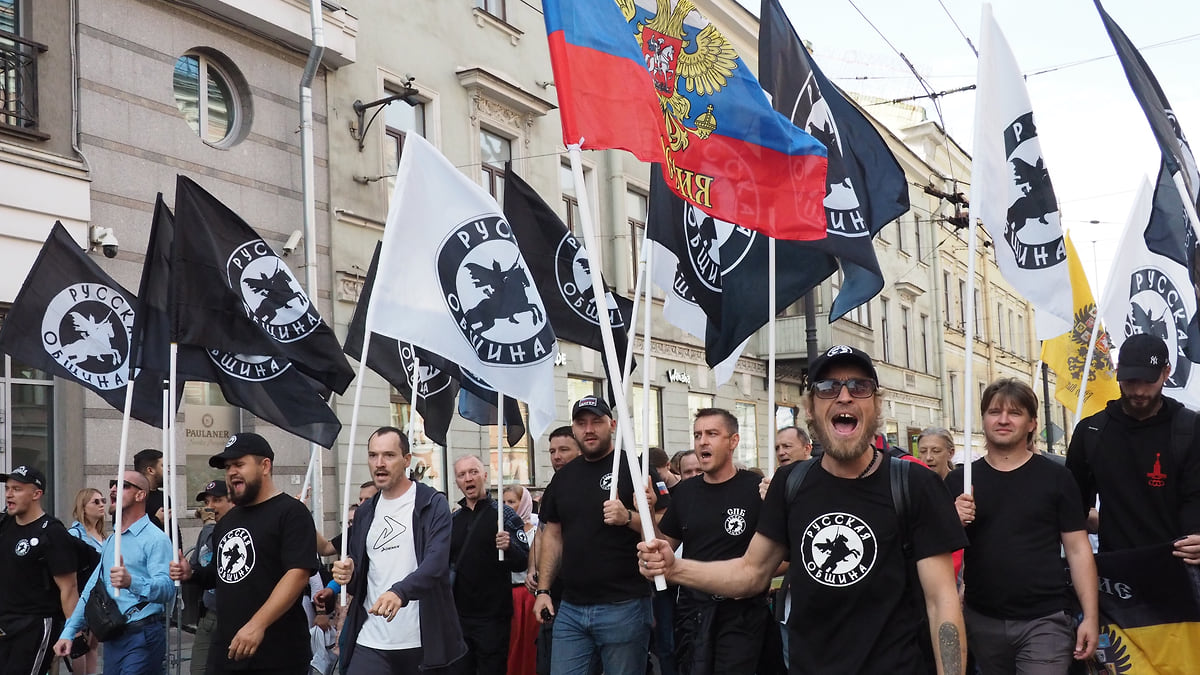Russia and the Phenomenon of "People's Militias": Security or a New Threat?

In recent months, Russia has faced a dual problem – large-scale military mobilization and an acute shortage of police officers. Thousands of experienced policemen have been deployed to the front or engaged in military operations, leading to a significant reduction in law enforcement personnel in cities and regions. Against this backdrop, a deficit in public order control has emerged, which the state is trying to compensate for by creating and legitimizing so-called “people’s militias".
The most active and notable example is the movement "Russian
Community", whose members, according to official statements,
"patrol the streets" and "assist law enforcement agencies". In practice, this often involves intimidation, beatings of suspects, and
independent “investigations,” raising serious questions about the legality of
their actions.
Formally, such militias operate “within the law” and under
the supervision of the Ministry of Internal Affairs, but in reality, state
control over them is minimal. The Kremlin publicly supports these initiatives
of "citizens’ self-organization", presenting them as a manifestation
of "public responsibility". Governors in several regions (especially
in Siberia and southern Russia) have already begun providing these formations
with funding and legal support, citing the need to "combat crime and sabotage".
A significant proportion of the members of the "Russian
Community" and other militias are nationalists known for their harsh
rhetoric against migrants, opposition activists, and members of the LGBT
community. This could lead to a surge in street violence and ethnic
discrimination.
The absence of clear regulations allows militia members to
act outside the legal framework. Cases of beatings of people suspected of
“anti-state activity” and attempts at “arrests” without police presence have
already been recorded.
The strengthening of such formations could result in the
emergence of a parallel security structure that, in a critical moment, may slip
out of state control. History knows examples when similar groups evolved into
full-fledged paramilitary organizations. Although these militias currently act
in the interests of the Kremlin, in the context of economic crisis and
potential destabilization, such armed groups could become a political pressure
factor — or even an instrument of internal elite struggles.
The Russian practice of creating volunteer militias harks
back to the Soviet experience of the 1950s–1980s, when "people’s
militias" patrolled the streets alongside the police. However, back then,
they were under strict party control, and membership was carefully vetted. The
current situation is fundamentally different: many groups are ideologically
based on far-right views, and state oversight is extremely weak.
The closest historical analogy is paramilitary formations
in crisis states (such as Iran’s Basij units or the
"stormtroopers" of Weimar Germany), which began as auxiliary forces
but eventually became independent political tools.
In addition, the state may gradually integrate these
militias into security structures, turning them into an additional instrument
of societal control. However, with weakened centralized oversight, militias may
begin to act in their own interests, provoking mass unrest and ethnic
conflicts. In the event of an economic or political crisis, armed and
radicalized militias could turn against the authorities themselves, becoming a
factor of internal destabilization.
At first glance, the creation of “people’s militias” seems
like a logical response to the police personnel crisis. However, relying on
nationalist and ideologically motivated groups is an extremely risky step.
Instead of strengthening public order, Russia may face an increase in street
violence, the empowerment of radical movements, and a weakening of public trust
in state institutions.
In our view, the Kremlin, in trying to make up for the shortage of police officers, is effectively playing with fire. If these formations are given broad autonomy, they could become not only a threat to the opposition or migrants but also a potential tool in power struggles within the elite itself.
 Latest news
Latest news Latest news
Latest newsUkraine on the Threshold of a Political Shift: Updated Peace Plan and Zelensky’s Statement on Readiness for Elections
10.Dec.2025
Russia Proposes New Medal for Evacuating Bodies from Combat Zones
09.Dec.2025
The Shadow of Kadyrov in Yerevan: How a Woman Who Fled Violence Was Killed?
09.Dec.2025
Ukraine is Strengthening its Army amid a Growing Threat
08.Dec.2025
Ukraine Strengthens Its Army Amid Growing Threats
08.Dec.2025
Moscow and Beijing Conduct New Air-Defense Drills: What Lies Behind the Strengthening of Their Joint Shield?
07.Dec.2025
Russia–India: A New Architecture of Partnership. What Stands Behind Putin’s Visit to New Delhi?
06.Dec.2025
The National Security Strategy of Armenia: Analysis of Current Threats and Strategic Approaches
05.Dec.2025
Verkhovna Rada Approves the 2026 Budget with Record Security Spending
04.Dec.2025
Boris Navasardyan: Where Is the Peace Process Between Armenia and Azerbaijan Heading?
03.Dec.2025

 13 Dec 2025
13 Dec 2025








